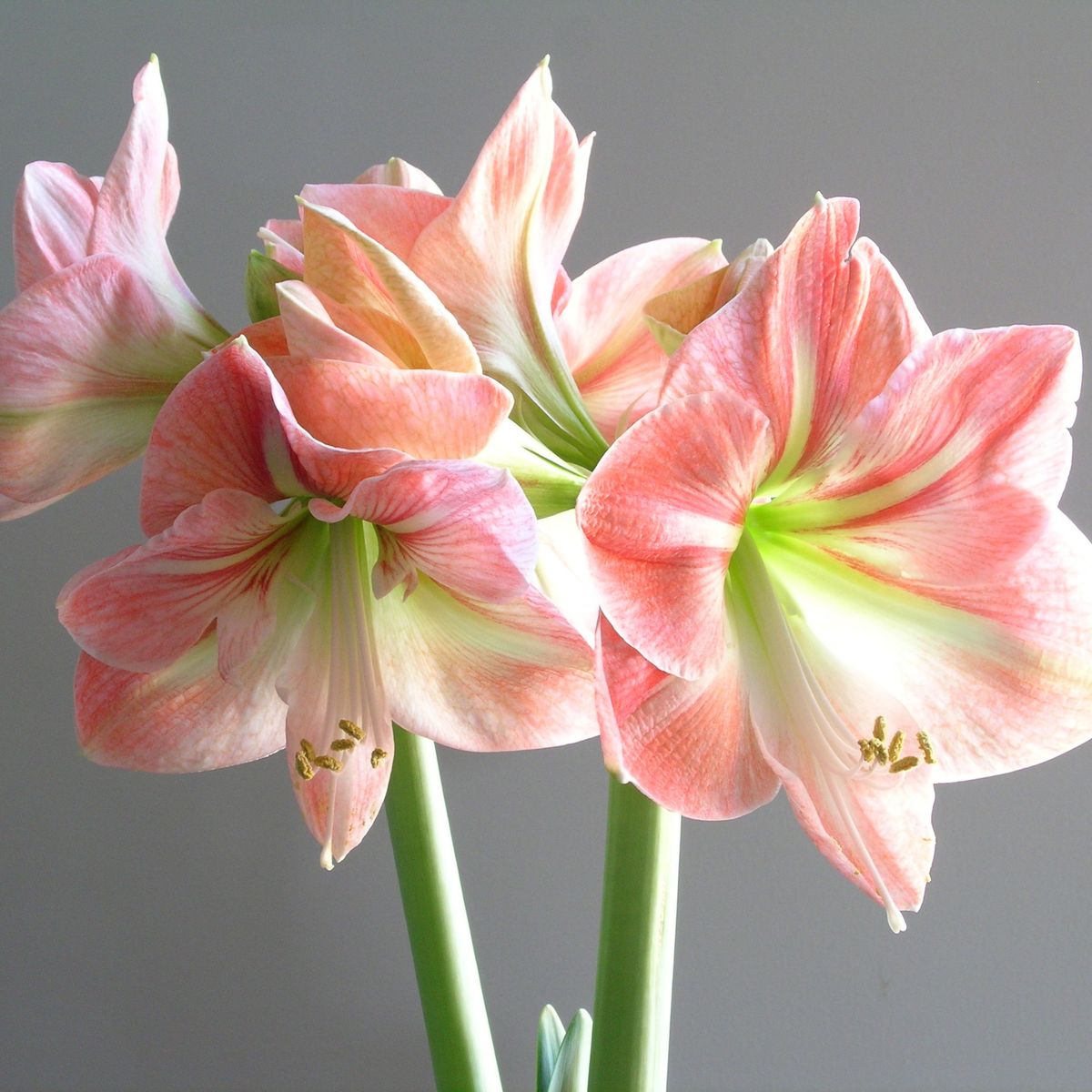Cornus alternifolia
Some of the best things in life are layered: ogres and onions, cakes and parfaits, complex and well-written characters… I could go on and on.
But one plant buries all those other things under its own layers of aesthetic awesomeness: the pagoda dogwood tree.

We link to vendors to help you find relevant products. If you buy from one of our links, we may earn a commission.
Alongside lush foliage and beautiful blooms, Cornus alternifolia has tiered, starkly horizontal branching that contrasts beautifully with vertical lines in the landscape, such as adjacent tree trunks and nearby buildings.
They’re not too tough to grow, thankfully. By following a few simple guidelines, anyone can kickstart the growing process in their own gardens.
And if you’re here reading this guide, that “anyone” could be you!
Ready to add an incredible dogwood to your collection? Then let’s get to it.
Check out what we’ll cover:
What Are Pagoda Dogwoods?
The pagoda dogwood – aka Cornus alternifolia – is a small deciduous tree from the dogwood or Cornaceae family.
Hardy in Zones 3 to 7, this species hails from the eastern half of North America, growing in forests, along stream banks, and in fields as far north as Newfoundland, as far west as Minnesota and Arkansas, and as far south as Alabama and Georgia.

Flaunting a flat-topped crown, this tree grows 15 to 25 feet tall and 20 to 32 feet wide at maturity, and has very distinct horizontal branching.
The branches – practically parallel to the ground, with plenty of vertical space in between – give the tree a layered, multi-tiered look. These layers look much like a pagoda, hence the name.
The species name alternifolia refers to the alternate arrangement of the pagoda dogwood’s leaves.
The only other Cornus with alternating leaves is C. controversa, aka the giant dogwood, table dogwood, or wedding cake tree.

Speaking of leaves, pagoda dogwood foliage is pretty textbook for a dogwood: oval-shaped and green, with a tapered apex and opposing leaf veins that run parallel to the leaf margins.
Come fall, the foliage turns a reddish-purple hue, often with yellow or green tints.
Unlike flowering dogwoods and kousa dogwoods, pagoda dogwoods lack the classic leaf bracts which resemble flowers.
Instead, they produce small, pale yellow, fragrant blooms that emerge in May to June.
By late summer, the flowers give way to fruits: blue-black drupes atop red stalks. These fruits provide sustenance to birds and other wildlife.
Cultivation and History
To understand the history of the pagoda dogwood, we must explore its “roots” within the Cornus genus.
Cornus is composed of 58 various tree, shrub, and rhizomatous herb species, which are distributed across Eurasia, North America, northern South America, and sub-Saharan eastern Africa.
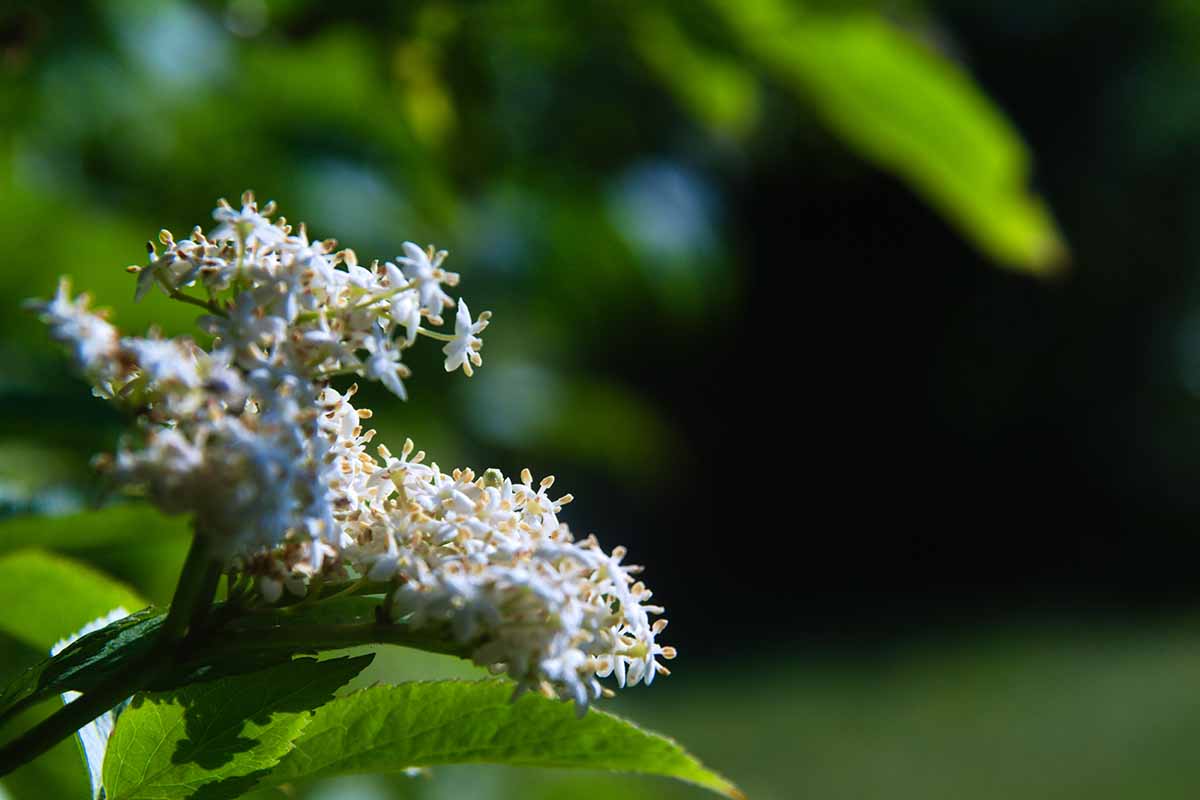
Within the genus are four clades of dogwoods: the blue- or white-fruited kinds, the big-bracted ones, dwarf varieties, and cornelian cherries.
With its blue-black drupes, the pagoda dogwood is a starring member of that first clade.
As a Cornus, the pagoda dogwood produces a fine-grained and dense lumber, which is useful in making tool handles, golf club heads, loom shuttles, and other small items which require strength and impact resistance.
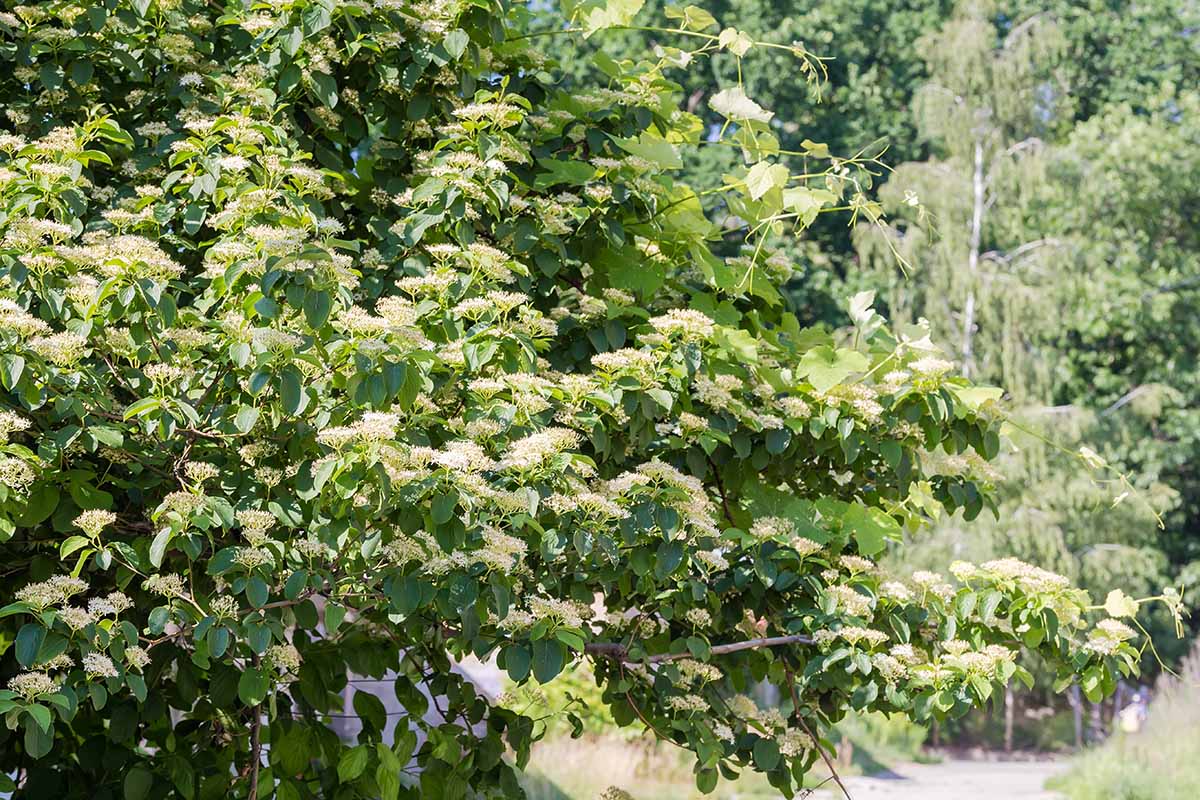
Ecologically, the tree provides cover and food for a variety of birds and herbivorous mammals.
In traditional Chinese medicine, the pagoda dogwood has been used as an analgesic, diuretic, and tonic.
And of course, this species is commonly put into use in the landscape for its attractive, horizontally-branching form.
Propagation
To propagate a pagoda dogwood, it’s best to do so from seed, cuttings, or via transplanting… but due to its fibrous, spreading root system, you should only do the latter of these when the plant is very young.
From Seed
To propagate seed, you’ll obviously need said seeds. Thankfully, collecting them from local specimens is a pretty easy process.
When the fruits ripen to a blue-black hue in late August to mid-September, either hand-pick them or jostle them from the tree onto a sheet that you’ve laid out in advance.
Use your hands – or a blender, in the case of large batches – to remove the pulp from the seeds. The seeds are tough and hardened pits, so don’t worry about damaging them.

Place your pagoda puree in a large container of water to separate the pulp and skins from the seeds.
Any non-viable seeds will float along with the waste, while the viable ones will sink to the bottom. Keep the viable seeds and discard the rest.
In order to maintain viability, the seeds shouldn’t be allowed to dry out prior to planting. You can either plant them immediately that fall, or stratify them indoors until the following spring.
For the latter, put the seeds in a moist, 50:50 mix of sphagnum peat moss and perlite, and keep them refrigerated until spring.
Planting time? Sow the seeds a half-inch deep in fertile, well-draining, and partially-shaded soil outdoors.
Space the seeds as far apart as you expect them to spread at maturity, so about 20 to 32 feet apart, depending on the variety.
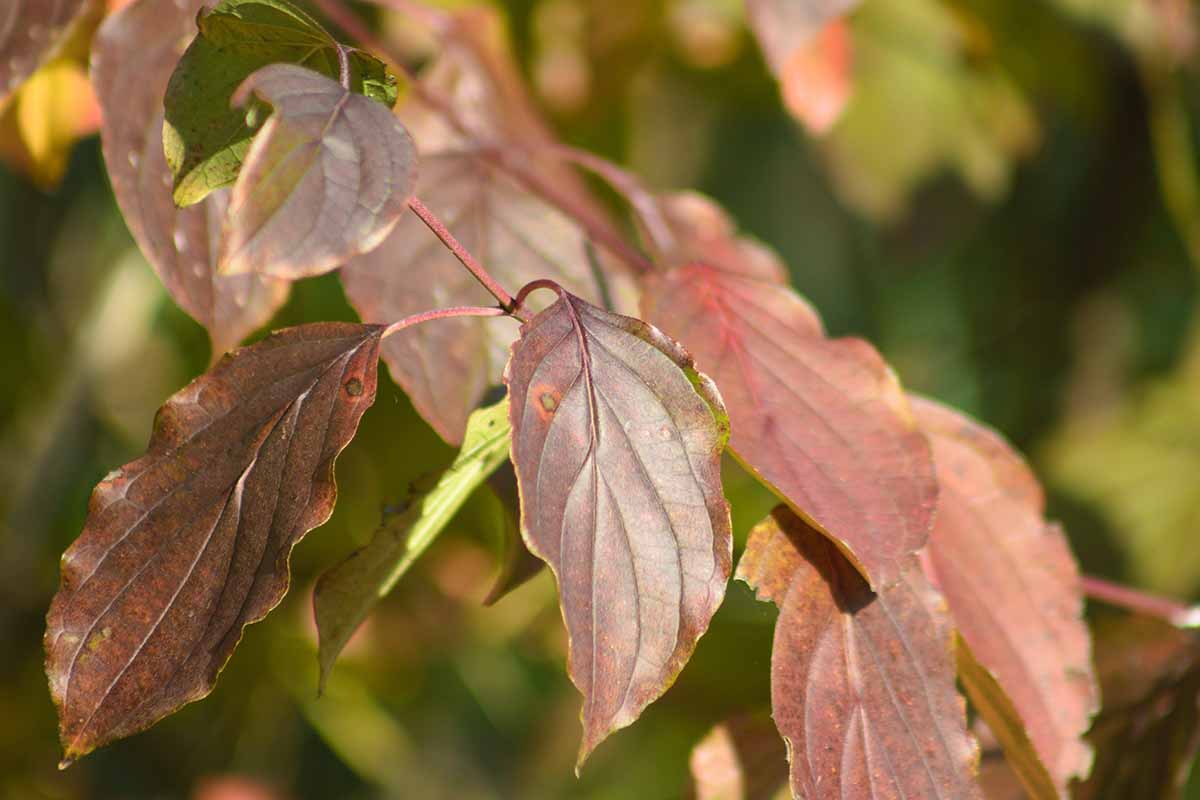
Upon sowing, water them in, and keep the seeds moist as they germinate and sprout.
For most seeds, this’ll take a few months, but some might take two years or more to germinate. Be diligent and stay patient!
From Cuttings
Cuttings more your speed?
Come summer, use a sterile blade to take four-inch lengths from the terminal ends of semi-hardwood shoots. Ensure that each cutting has a couple of nodes and a few leaves.
Defoliate the bottom half of each cutting before dipping them into a rooting hormone.
For such a product, Bontone II IBA rooting powder from Bonide is the perfect choice. It’s available at Arbico Organics.
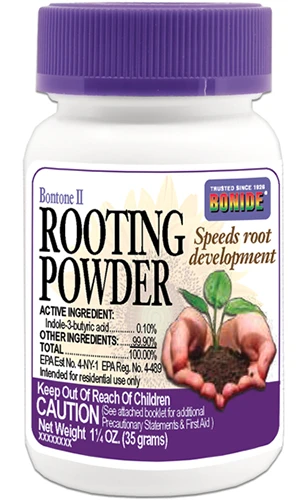
Bontone II Rooting Powder
Stick the hormone-dipped ends of your cuttings into a seed-starting tray filled with a 50:50 mix of sphagnum peat moss and perlite.
Keep the cuttings a couple inches apart, moisten the medium, and keep the tray near a sunny window.
Keep the medium moist while roots form. In six to eight weeks, check the cuttings for root development by giving them a tug.
If they have strong roots, repot each cutting into its own four-inch container, filled with a similar medium. In their new containers, continue to provide sun exposure indoors and keep the media moist.
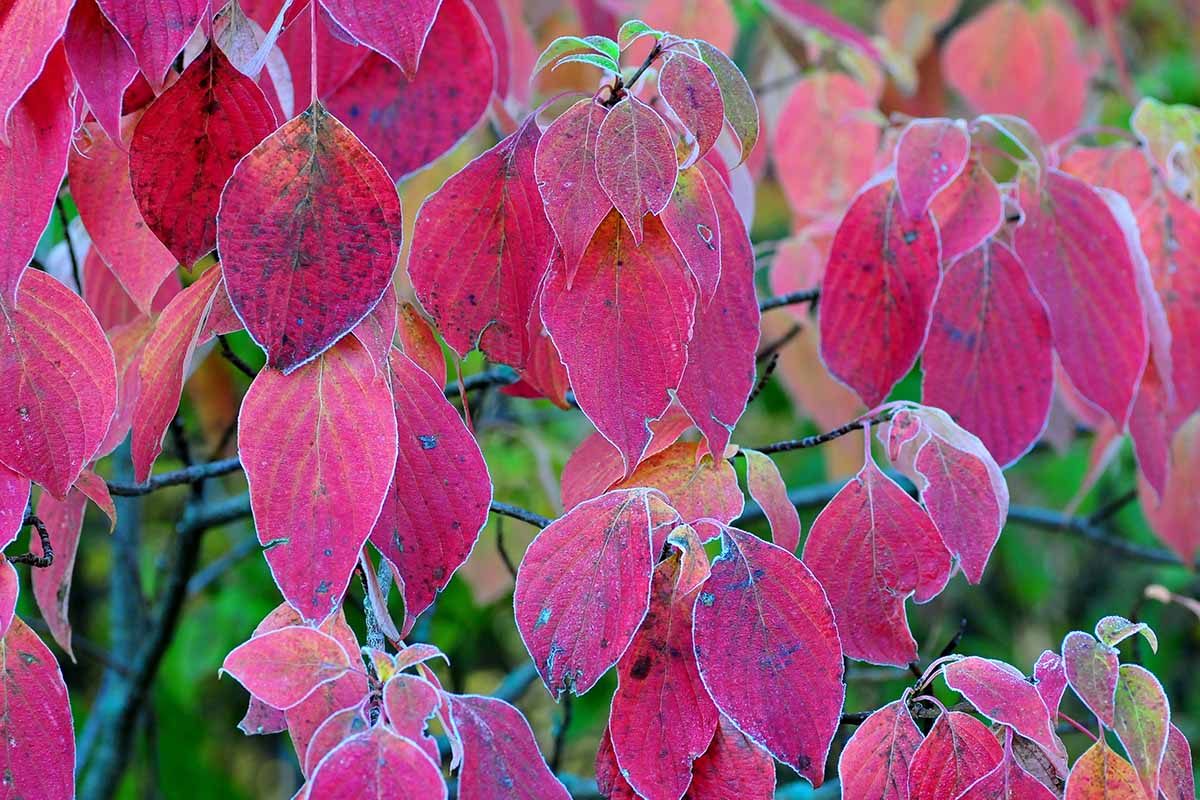
Come spring, rooted cuttings are ready to start hardening off. Move them outside and expose them to full or partial sun for 30 to 60 minutes before bringing them back inside.
Each day to follow, add an additional 30 to 60 minutes until the cuttings can handle a full day’s exposure, and then they’ll be ready for transplanting into the garden!
Via Transplanting
As stated earlier, transplanting is only recommended for propagules or young plants, since the fibrous root system of a large pagoda dogwood can be a real pain to transplant.
Dig the transplant holes about the depth of and a bit wider than the root systems.
Transplants that come potted in soil should be gingerly removed from their containers, then gently placed into their holes.
If the roots are bound a bit, slice an “X” into the bottom of the compacted root mass with a sharp and sterile blade.
For bare root transplants, build up a mound of soil in the hole, lower the transplant into the hole, and then spread the roots out over the soil mound.
Backfill with soil, tamp all it down, and repeat as needed. Water in the transplants.
Add two to four inches of mulch to the root zone – while leaving the root flare exposed – and keep the root zone moist as the transplants grow and become established.
How to Grow
You can’t have an architectural pagoda without a plan, and the same goes for a pagoda dogwood.
Follow the recommendations below and your pagoda dogwood trees will grow and look their best.
Climate and Exposure Needs
First and foremost, you’ll want to plant these trees within USDA Hardiness Zones 3 to 7 to ensure their survival.

Since pagoda dogwoods are typically understory trees, placing them in wind-protected sites can help them avoid damage.
Windbreaks such as nearby structures or lines of coniferous evergreens would work perfectly for this purpose.
Light-wise, partial shade is best. Full sun works in cooler climates. Otherwise, you’ll really have to keep on top of your irrigation.
Soil Needs
Plant in well-draining soil to ensure that the plant’s root zone isn’t waterlogged. Oversaturated soils can easily lead to root rot.
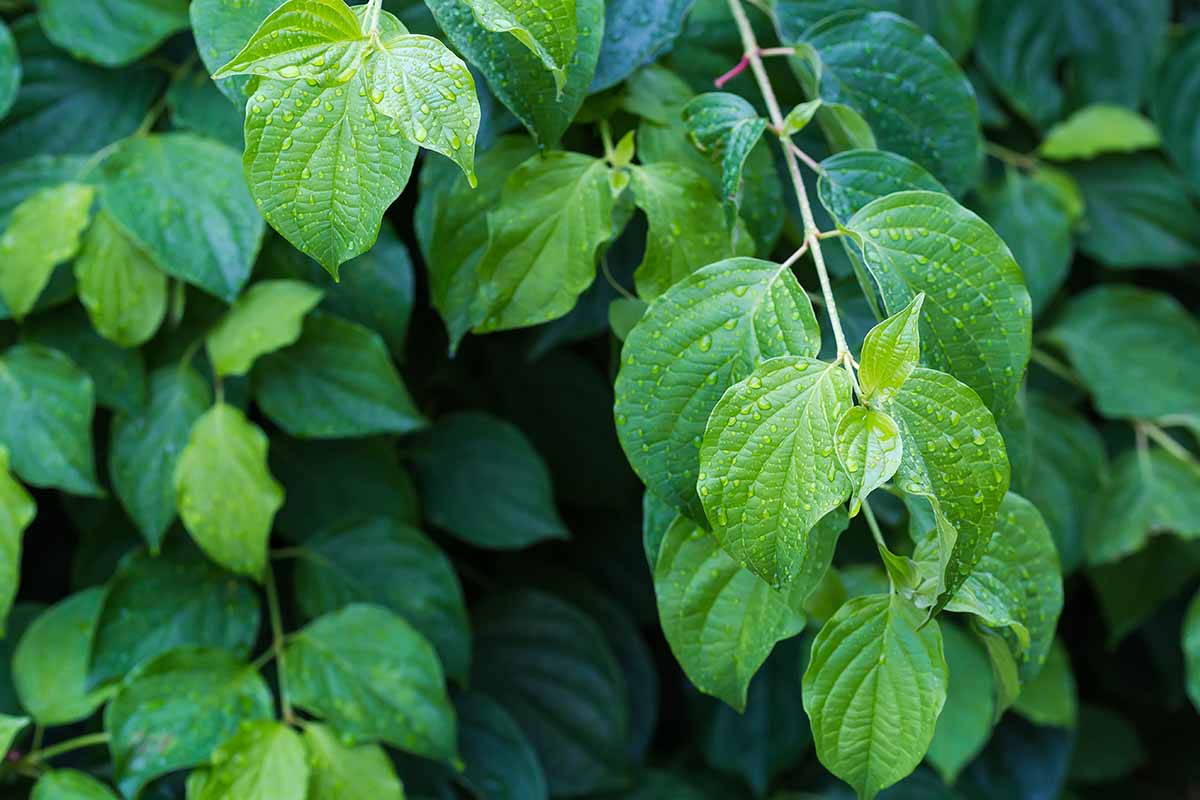
An acidic soil pH of 5.5 to 6.5 is also advisable.
Irrigation and Fertilization Needs
A pagoda dogwood’s soil should be kept moist for optimal growth. This means watering whenever the top inch or two of the soil feels dry to the touch.
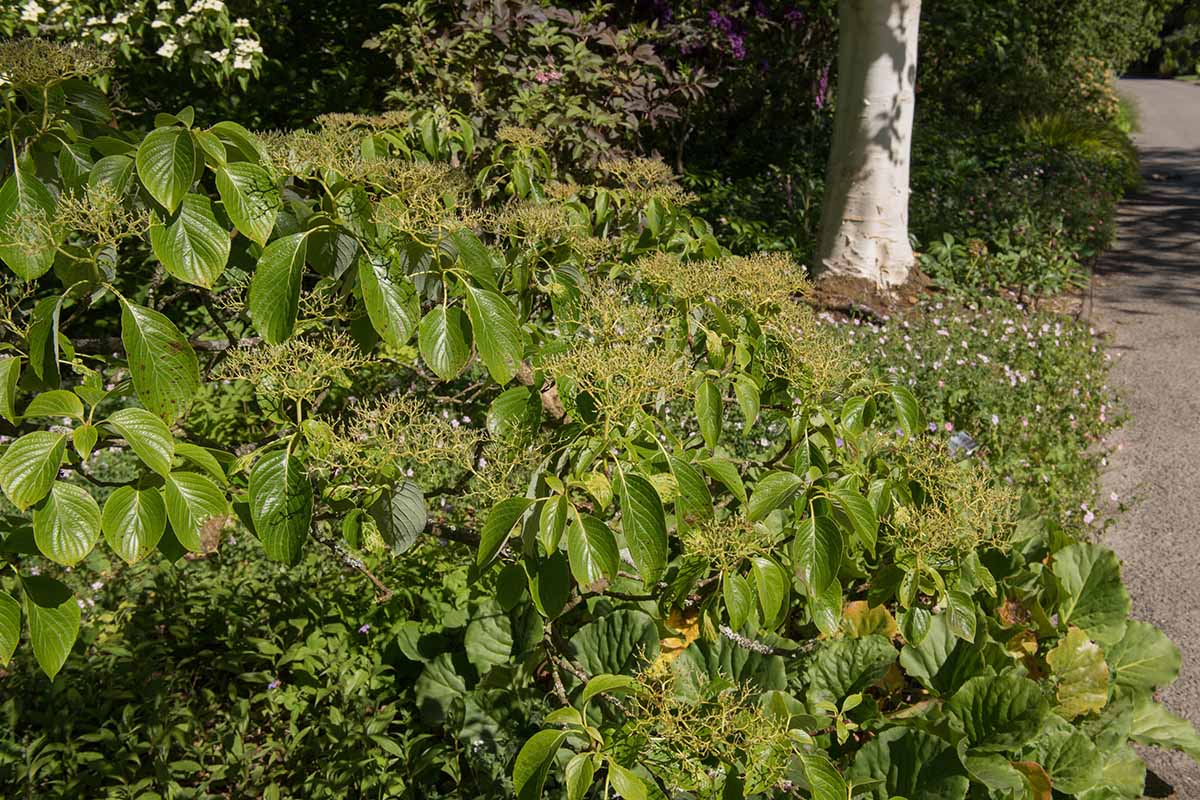
A naturally moist and well-draining area is an even better spot, and one that can spare you some extra irrigation efforts.
Fertile soil is also ideal, so be sure to work a couple inches of humus into the root zone each spring. Compost, well-rotted manure, or even green manures (i.e. cover crops) are all fantastic options.
Growing Tips
- Partial shade is ideal, but full sun works as well.
- Provide well-draining soil with a pH of 5.5 to 6.5.
- Keep the soil moist by watering whenever the top one to two inches of soil feel dry.
Pruning and Maintenance
A dedicated session of pruning should be done in early spring, before the first flush of new growth.
Your goal with shaping a pagoda dogwood is to accentuate its layered and tiered aesthetic, so remove any branches that point sharply downward or upward to emphasize the parallel branching.
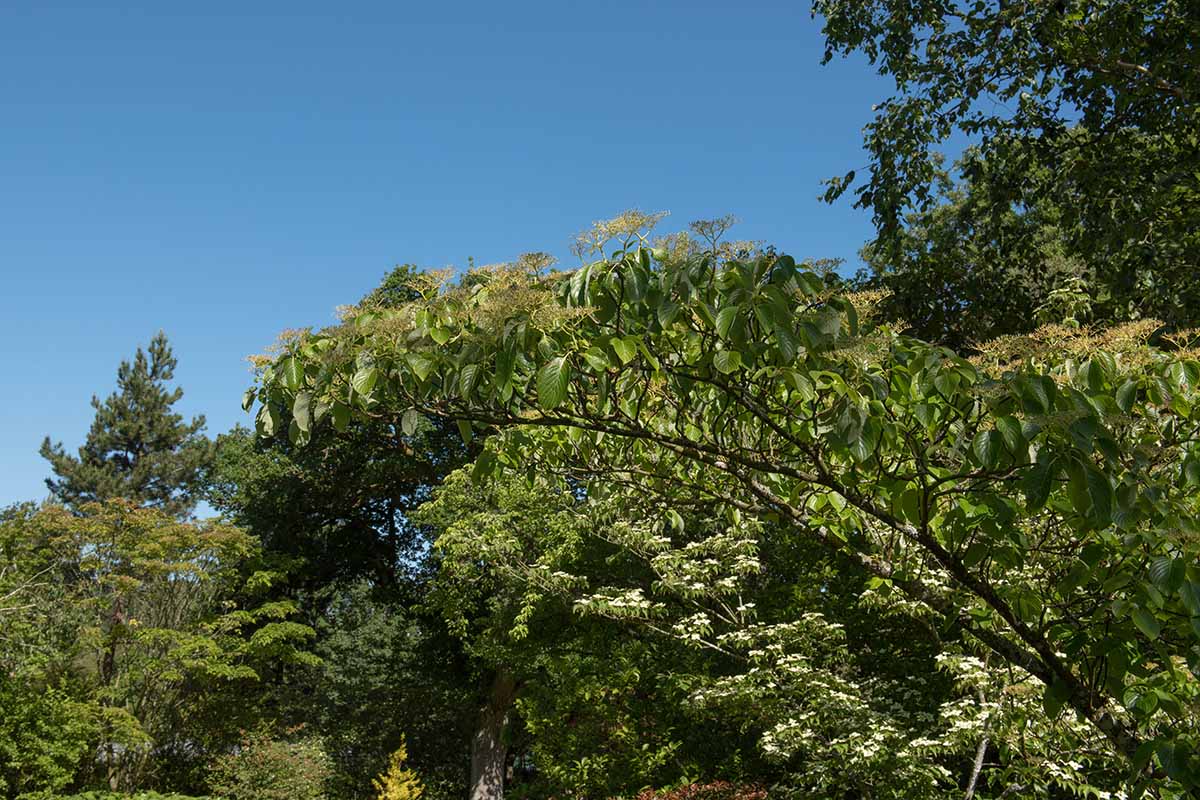
Any diseased, damaged, or dead branches can be pruned whenever you happen to notice them. Regardless of when and how you prune, use sterilized tools!
Additionally, you should maintain the layer of mulch you established earlier. A pagoda dogwood’s root system is shallow, and these trees can easily lose water in warm, sunny, and windy climates.
Along with moisture retention, mulch aids in weed suppression and maintaining cool soil temperatures, so mulch up!
If you so desire, rake up any dropped leaves in autumn.
A woodland planting looks good with some nearby fallen foliage, while a pagoda dogwood that sits in leafless turf looks pretty fly… and in either case, removing leaf detritus can help to prevent pest and disease issues.
In cold winters, ice damage can be a problem. If the weight of the ice partially breaks off a branch, the damage should be pruned away once the ice melts in spring. Fallen branches should be tossed onto the brush pile or disposed of.
Cultivars to Select
To buy a pagoda dogwood, you should definitely check out your local plant nurseries or online plant shops.
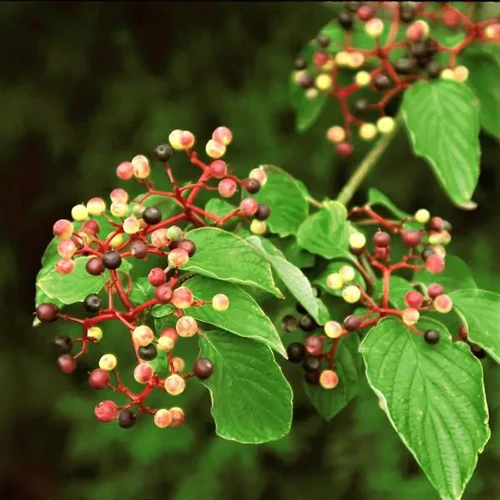
Pagoda Dogwood
If you need ready-to-transplant specimens from a reputable vendor, lo and behold these bad boys from Nature Hills Nursery.
But I would be remiss if I failed to offer alternate varieties of the alternate-leaf dogwood, so here are four fantastic cultivars to choose from!
Argenta
For a shrubby version of the pagoda dogwood with white-variegated foliage, look no further than ‘Argenta.’
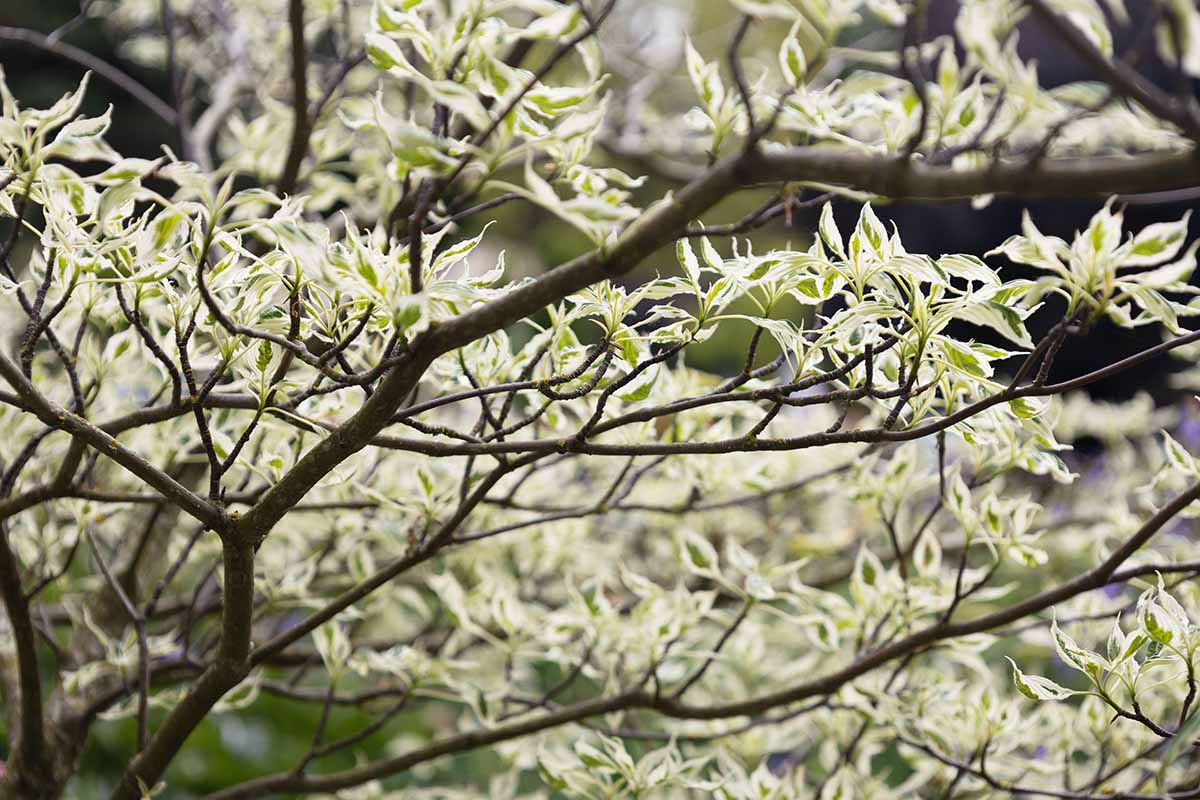
Measuring 10 to 15 feet tall and 12 to 20 feet wide, ‘Argenta’ fits where a standard C. alternifolia won’t, and does so in style.
Bachone
Not small enough for you? Behold ‘Bachone’ aka Gold Bullion. It’s eight to 10 feet tall and wide, with golden foliage that flaunts specks of green, and flashes of red alongside the yellow in fall.
As an added benefit, white-topped flower cymes break up what some may consider to be “too much” yellow. As if such a thing exists.
Black Stem
You might be curious to know what’s so special about ‘Black Stem.’
Well, it’s right there in the name! At a height of 25 feet, ‘Black Stem’ stands tall with dark stems, which can look menacing during the leafless winter months.
For the emo gardener, ‘Black Stem’ is the perfect planting.
W. Stackman
For those looking for top-tier branching and foliage, ‘W. Stackman’ (aka Golden Shadows) is stacked.
With a height and spread of 10 to 12 feet, ‘W. Stackman’ has leaves that emerge in red come spring, and go on to flaunt a light green to yellow variegation at the margins.
The branches are starkly horizontal, so its layered form is quite emphasized.
Managing Pests and Disease
Fortunately, this plant is deer-resistant. Unfortunately, that’s where a pagoda dogwood’s resistance pretty much ends. Here are a few pests and diseases that can cause problems.
Insects
Creepy-crawlies are annoying enough on their own, but when you also consider their capacity for vectoring pathogens? It’s all the more reason to have solid pest control strategies in place.
Dogwood Borer
After emerging from eggs laid by their wasp-like clearwing moth parents, Synanthedon scitula larvae are poised to strike.
And strike they do: the larvae start consuming the inner bark and cambium, which can lead to premature leaf drop, kill individual branches, and decrease overall plant vigor.
In time, the feeding damage can kill young trees.
Along with proper cultivation from the get-go, be careful to avoid unnecessary injury to the tree, since eggs are often laid in wound openings.
Applying permethrin in early May, with repeat applications every three weeks until autumn, will help to manage these pests.
Is your tree too far gone to save? Then removing and disposing of it is your only remaining option.
Leaf Miner
Leaf miners are the larval stage of a variety of sawflies, wasps, and beetles, known to live within and consume plant foliage as they mature.
As they feed, they leave behind whitish tunnels that can combine to form larger blotches, which reduces photosynthesis and aesthetics.
Any infested plant leaves should be removed ASAP. Since leaf miners can infest nearby weeds as well, controlling and removing them will leave your tree less vulnerable.
Nearby trap crops such as columbine can help lure leaf miners away from your pagoda dogwoods.
Diglyphus isaea is a wasp parasite of leaf miners that can be effective in management when released early in the season.

Leaf Miner Parasite
They can be purchased in large numbers from Arbico Organics.
Sprays of spinosad on plant surfaces will effectively poison and kill any larvae that feed on them within a day or two.
Applying three to four sprays, spread equally throughout the growing season, is a solid strategy.
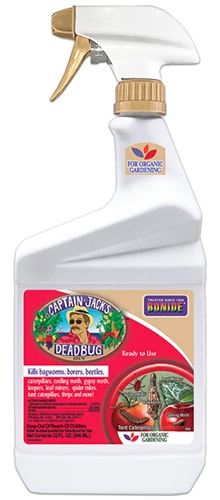
Bonide Captain Jack’s Deadbug Brew
Spinosad is available as a concentrate or in ready-to-spray bottles from Arbico Organics.
Learn more about how to manage leaf miners in our guide.
Scale
These small, round-bodied pests suck the phloem from infested plant tissues, which can lead to chlorosis, reduced vigor, and an unsightly appearance.
Additionally, they secrete honeydew in their wake, which can lead to the development of black sooty mold.
Branches with large infestations can be removed. Direct applications of insecticidal soap or horticultural oil are also effective for control.
Disease
Many diseases can be prevented with sanitary gardening practices. Sterilizing your tools, using clean soils and pathogen-free plants – every good habit helps.
Dogwood Anthracnose
Caused by Discula destructiva, this fungal disease also goes by the name discula anthracnose. If this disease is new to you, just know that the species name is quite on point.
Initial symptoms manifest as small, tan leaf spots, which often develop into larger blotches with purple to brown margins as the disease progresses. Drooping and blighted leaves can also result.

The disease works its way up the stems, branches, and trunk, leaving cankers in its wake.
The girdling and death of infected tissues can result, and all of this can culminate in plant death over time.
Any cankered or dead branches should be pruned, and nearby leaf detritus should be raked up and disposed of.
Thankfully, the branching habit of this plant provides adequate airflow, so no additional pruning is required in that regard.
When sprayed with fungicides in early spring, new growth stands a greater chance of avoiding infection.
Remove and dispose of any infected trees that are beyond saving.
Fungal Leaf Spot
Typically occurring in wet summer conditions, fungal leaf spots in pagoda dogwoods are primarily caused by species of Septoria and Cercospora cornicola fungi.
Both types of pathogen cause small, irregularly-shaped spots, which are bordered by leaf veins. Septoria spots are dark brown, while Cercospora spots are more of a tannish-brown hue.
Fungal leaf spot isn’t fatal, but it won’t leave a tree looking its best.
Raking up and disposing of fallen leaves help to prevent the overwintering and subsequent spread of the fungi, while applications of fungicides are typically needed to control severe infections.
Golden Canker
Caused by the fungus Cryptodiaporthe corni, golden canker may infect pagoda dogwoods in a variety of conditions year-round.
It’s a disease that exclusively infects alternate leafed dogwoods – an honor that I’m sure the tree doesn’t appreciate.
There are a few unknowns about the disease. First, it’s not quite clear exactly how the pathogen infects the tree, though entry via wounds and natural openings is the leading theory.
Additionally, the fungus can actually live within the plant without doing damage, so the exact reasons why the pathogen makes the switch from benign to malignant are still unclear.
Infected bark turns a bright yellow to tan color, while small raised orange bumps develop on the bark’s surface.
Cankers first appear on the branch tips and progress downward as the infection spreads to larger stems and branches.
Infected branches may fail to leaf out come spring, while canker-girdled branches can wilt and die.
The only known effective way of managing golden canker is to prune diseased branches.
Be sure to make your cuts within a centimeter above a healthy node that’s at least two nodes below any infected bark.
To reduce the amount of spores produced within the canopy, the best time to prune infected branches is during dormancy in subfreezing temperatures. Once you have your pruned-away branches, burn or bury them.
Best Uses
When you consider the beautiful tiered branching of a pagoda dogwood, it definitely qualifies for use as a specimen in your home landscape.
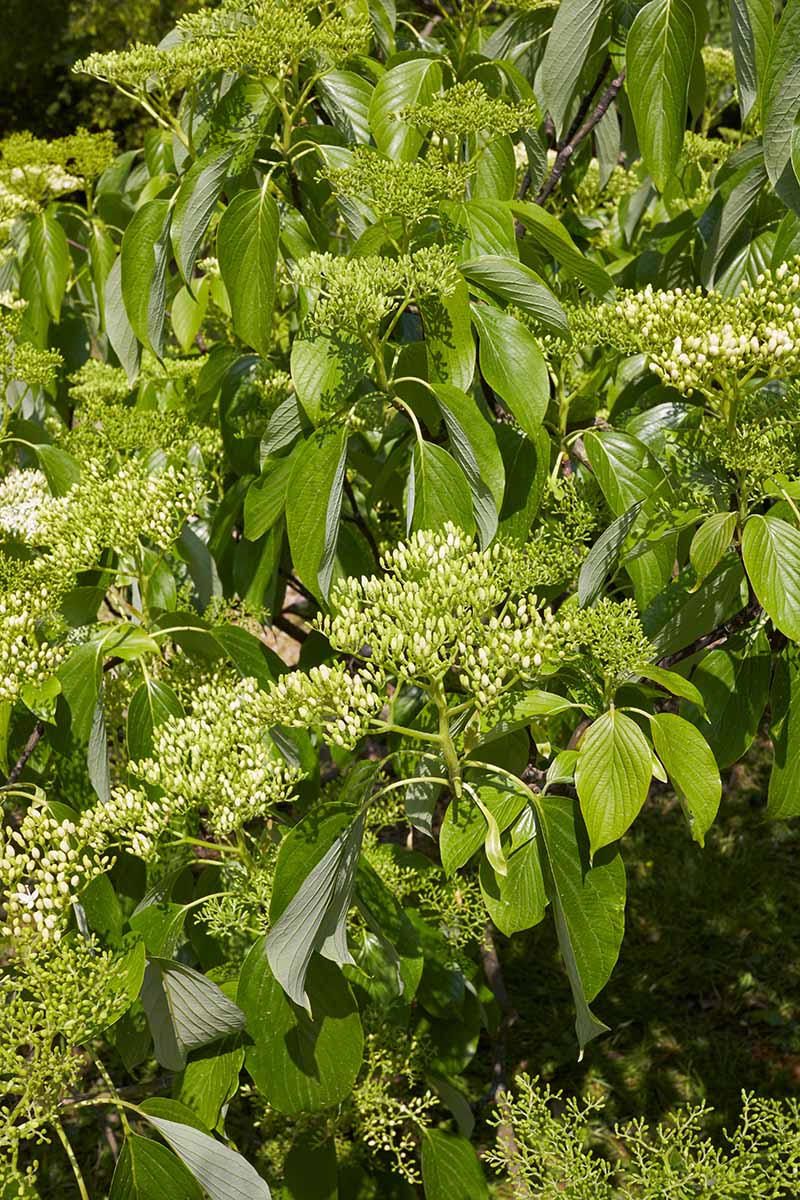
Additionally, you can place these trees in groupings or use them as a border along the edge of your property.
As an understory forest tree, the pagoda dogwood looks gorgeous in woodland gardens. Since it attracts a plethora of fauna, you’ll certainly encourage species diversity in the ecosystem!
Quick Reference Growing Guide
| Plant Type: | Deciduous tree | Flower/Foliage Color: | Yellowish-white/green |
| Native to: | Eastern North America | Maintenance: | Low |
| Hardiness (USDA Zones): | 3-7 | Tolerance: | Deer, lean soil, juglone |
| Bloom Time: | May to June | Soil Type: | Moist, fertile |
| Exposure: | Full sun to partial shade | Soil pH: | 5.5-6.5 |
| Time to Maturity: | 2-6 years | Soil Drainage: | Well-draining |
| Spacing: | 20-32 feet | Attracts: | Birds, butterflies, mammals |
| Planting Depth: | 1/2 inch (seeds), depth of root system (transplants) | Uses: | Grouping, shrub border, specimen, woodland garden |
| Height: | 15-25 feet | Order: | Cornales |
| Spread: | 20-32 feet | Family: | Cornaceae |
| Water Needs: | Moderate | Genus: | Cornus |
| Common Pests and Diseases: | Dogwood borer, leaf miner, scale; dogwood anthracnose, fungal leaf spot, golden canker | Species: | Alternifolia |
Alternate Leaves for an Alternate Look
If you’re interested in “branching out” with layered branching, you should really give the pagoda dogwood a go.
It’ll certainly draw the eye of onlookers, and who knows? It may become your new go-to recommendation for folks looking to add some pizzazz to their landscape.
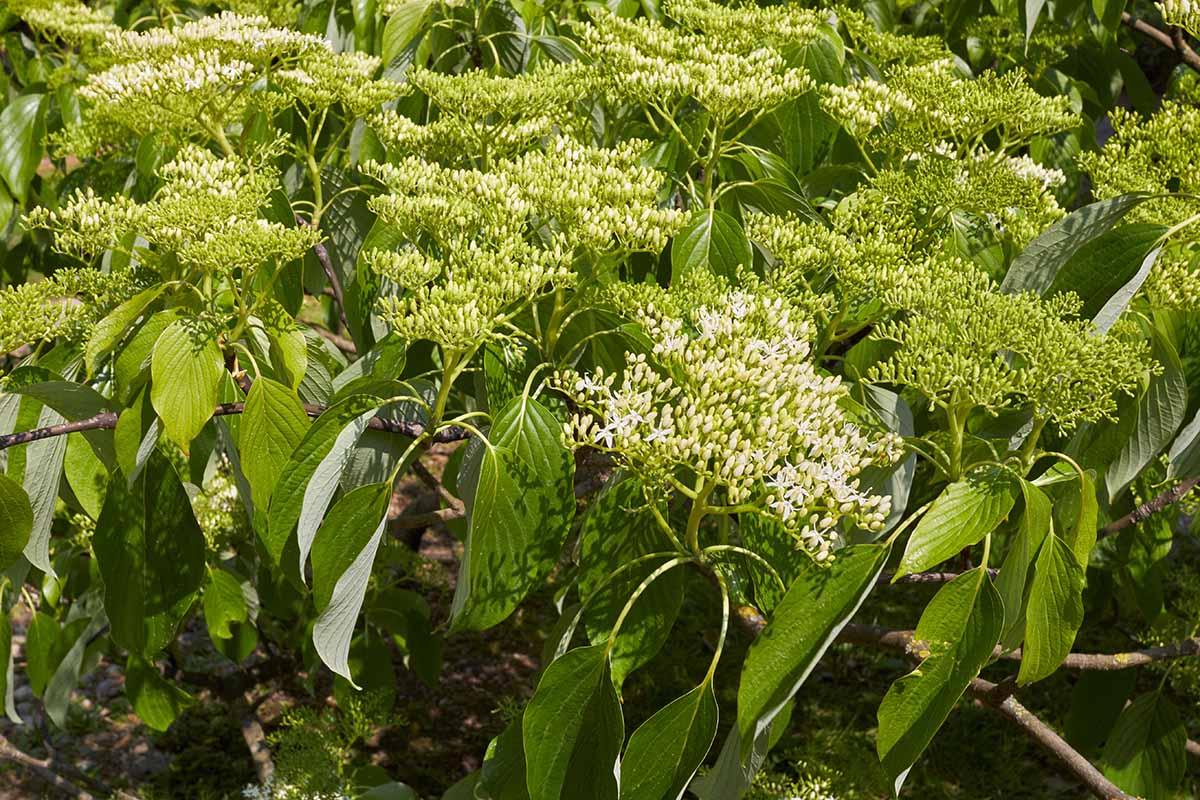
Now that you have the lowdown on the pagoda dogwood, go forth and grow! Spread your wings and fly! Other enthusiastic encouragements!
Have remarks, questions, and/or concerns to share? Put ’em in the comments section below!
Trying to fill your landscape with more deciduous trees? Ask, and you shall receive:








